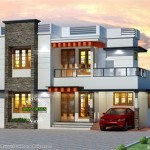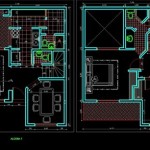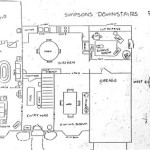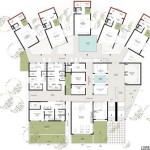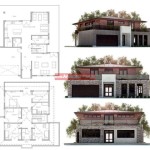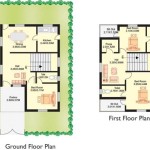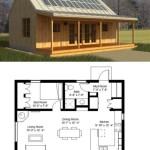Spanish Revival Home Plans: A Guide to Design and Style
Spanish Revival architecture, a popular residential style in the United States during the early 20th century, continues to captivate homeowners with its romantic charm and historical echoes. Drawing inspiration from the Spanish colonial and Mediterranean architectural traditions, these homes offer a unique blend of elegance and practicality.
Key Elements of Spanish Revival Architecture
Identifying a Spanish Revival home involves recognizing several key architectural features. These elements contribute to the overall aesthetic and create the distinctive character of the style.
- Low-Pitched Red Tile Roofs: One of the most prominent features is the low-pitched roof covered with red clay tiles. This roofing style not only adds visual appeal but also provides excellent insulation in warm climates.
- Stucco Walls: Exterior walls are typically finished with stucco, a durable and weather-resistant material that lends a textured, earthy appearance. Often, the stucco is painted in warm, earthy tones like white, beige, or light yellow.
- Arches: Arches are a recurring motif in Spanish Revival design, appearing in doorways, windows, porches, and as decorative elements within the facade. These arches can be rounded, pointed, or horseshoe-shaped, adding a touch of grandeur.
- Decorative Ironwork: Ornate ironwork is often used for window grilles, balconies, railings, and lighting fixtures. These details contribute to the overall elegance and contribute a sense of craftsmanship.
- Courtyards and Patios: Many Spanish Revival homes incorporate courtyards or patios, creating private outdoor living spaces. These areas often feature fountains, lush landscaping, and paved walkways, adding to the home’s tranquility.
Exploring Different Spanish Revival Home Plans
Spanish Revival architecture encompasses a variety of interpretations, leading to diverse home plans that cater to different lifestyles and preferences. Examining these variations allows for a more comprehensive understanding of the style's adaptability.
- One-Story Ranch Style: These plans emphasize horizontal lines and often feature sprawling layouts centered around a courtyard or patio. They offer convenient single-level living and are well-suited for larger lots.
- Two-Story Homes: Two-story Spanish Revival homes often incorporate balconies, allowing for scenic views and adding to the home's visual interest. These plans can provide more living space within a smaller footprint.
- Mediterranean Influence: Some Spanish Revival homes blend Mediterranean elements, such as arched loggias, pergolas, and extensive use of tilework, creating a distinct sub-style within the broader category.
Considerations for Choosing a Spanish Revival Plan
Selecting the right home plan requires careful consideration of various factors, ensuring the chosen design aligns with individual needs and preferences. A thorough evaluation of these aspects contributes to a successful building project.
- Lot Size and Orientation: The chosen plan should complement the lot's size and orientation, maximizing natural light and views while ensuring the home fits comfortably within the available space.
- Climate: Consider the local climate when choosing a plan. Features like courtyards and deep eaves offer passive cooling in hot climates, while fireplaces and thicker walls are beneficial in cooler regions.
- Budget: Building costs for Spanish Revival homes can vary depending on the complexity of the design and the materials used. Establishing a realistic budget upfront is crucial.
Modern Adaptations of Spanish Revival Plans
While retaining the core elements of the style, contemporary Spanish Revival home plans often incorporate modern amenities and design principles. This blending of traditional and modern creates a unique and appealing aesthetic.
- Open Floor Plans: Contemporary adaptations often feature open-concept living spaces, promoting a sense of flow and connectivity between rooms.
- Energy Efficiency: Modern building materials and techniques allow for the creation of energy-efficient Spanish Revival homes, minimizing environmental impact and reducing utility costs.
- Integration of Smart Home Technology: Many new Spanish Revival homes incorporate smart home technology, enhancing convenience and security.
Finding Spanish Revival Home Plans
Locating suitable home plans involves exploring various resources, ensuring a comprehensive search that yields a variety of options. Utilizing these avenues increases the likelihood of finding a plan that meets specific requirements.
- Online Architectural Plan Databases: Numerous websites offer extensive collections of house plans, including a wide selection of Spanish Revival designs.
- Architectural Firms: Working with an architect allows for customization and ensures the plan is tailored to specific needs and preferences.
- Custom Home Builders: Some builders specialize in Spanish Revival homes and may offer pre-designed plans or the option to create a custom design.
Landscaping Considerations for Spanish Revival Homes
Landscaping plays a vital role in enhancing the overall aesthetic of a Spanish Revival home. Selecting appropriate plants and hardscaping materials complements the architectural style and creates a cohesive outdoor environment.
- Drought-Tolerant Plants: Choosing drought-tolerant plants is ideal for these homes, particularly in drier climates, minimizing water usage and maintenance.
- Courtyard Gardens: Creating a courtyard garden with fountains, paved walkways, and lush greenery enhances the home's private outdoor space.
- Use of Terracotta and Stone: Incorporating terracotta pots, stone pathways, and other natural materials complements the home's earthy tones and textures.
Building a Spanish Revival Home
Constructing a Spanish Revival home requires careful planning and execution, ensuring attention to detail and adherence to the principles of the architectural style. Thorough preparation and collaboration with experienced professionals contribute to a successful building process.
- Finding Qualified Contractors: Selecting experienced contractors familiar with Spanish Revival construction is crucial for achieving the desired results.
- Material Selection: Choosing high-quality materials, such as authentic clay roof tiles and durable stucco, is essential for achieving the authentic look and longevity of the home.
- Attention to Detail: Careful attention to detail, particularly in the execution of arches, decorative ironwork, and other characteristic features, is vital for creating a truly stunning Spanish Revival home.

Spanish Colonial Home Plans Sater Design Collection

Small Spanish Contemporary House Plan 61custom Modern Plans Style Homes

Spanish Style House Plans Floor

Spanish Style House Plans Home Designs The Designers

Spanish Style Plans 1900 To1935 Vintage House Homes

Spanish Revival Style Home 1926 Universal Plan Service No 543 House Plans Portland Homes

Spanish House Plans Monster

Four Bedroom In Spanish Revival Style

American Residential Architecture The El Pardo House Plans 1929 Home Builders Catalog Span In 2024 Spanish Style Homes Revival Vintage

15 Spanish Style House Plans
Related Posts

